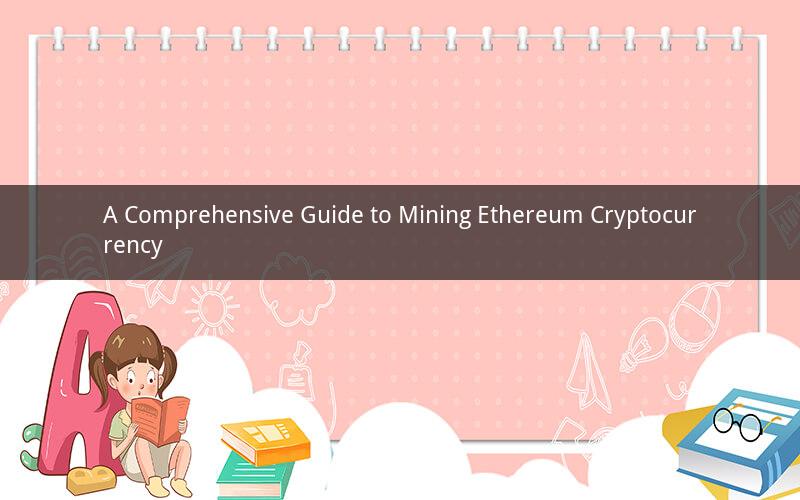
Ethereum, the second-largest cryptocurrency by market capitalization, has gained immense popularity among investors and miners alike. As a decentralized platform, Ethereum enables the creation of decentralized applications (DApps) and smart contracts. Mining Ethereum cryptocurrency is one of the primary ways to earn rewards while contributing to the network's security and decentralization. In this article, we will delve into what mining Ethereum cryptocurrency is, how it works, and the tools and hardware required for successful mining.
What is Ethereum Cryptocurrency?
Ethereum is a blockchain-based platform that facilitates the creation of decentralized applications and smart contracts. It was launched in 2015 by Vitalik Buterin, a Russian-Canadian programmer. Unlike Bitcoin, which is primarily a digital currency, Ethereum is a platform that allows developers to build and deploy decentralized applications and smart contracts.
Ethereum's native cryptocurrency is called Ether (ETH). Ether is used to pay for transaction fees on the Ethereum network and to incentivize miners to secure the network.
What is Mining Ethereum Cryptocurrency?
Mining Ethereum cryptocurrency is the process of validating transactions on the Ethereum network and adding them to the blockchain. Miners use their computing power to solve complex mathematical puzzles, and when they find a solution, they are rewarded with Ether.
The mining process is essential for the Ethereum network because it ensures that transactions are secure, decentralized, and tamper-proof. By mining Ethereum, you contribute to the network's security and help maintain its decentralization.
How Does Mining Ethereum Cryptocurrency Work?
Mining Ethereum cryptocurrency involves several steps:
1. Set up a mining rig: A mining rig is a computer designed for mining cryptocurrencies. It consists of a powerful graphics processing unit (GPU), a central processing unit (CPU), and memory.
2. Join a mining pool: Mining pools are groups of miners who work together to increase their chances of finding a block and earning rewards. Joining a mining pool can significantly improve your chances of mining Ethereum cryptocurrency.
3. Install mining software: Mining software is necessary to connect your mining rig to the Ethereum network and start mining. There are several mining software options available, such as Claymore's Ethereum Miner and PhoenixMiner.
4. Configure your mining rig: Once you have installed the mining software, you will need to configure your mining rig. This involves setting up your wallet address, selecting a mining pool, and adjusting the mining parameters.
5. Start mining: After configuring your mining rig, you can start mining Ethereum cryptocurrency. The mining process can be resource-intensive, so ensure your power supply is stable and your rig is well-ventilated.
What Hardware and Software Are Required for Mining Ethereum Cryptocurrency?
To mine Ethereum cryptocurrency successfully, you will need the following hardware and software:
Hardware:
1. Graphics Processing Unit (GPU): A powerful GPU is essential for mining Ethereum. The best GPUs for Ethereum mining include NVIDIA's GeForce RTX 3080, 3070, and 3060 series.
2. Motherboard: A high-quality motherboard is necessary to connect your GPU and CPU. Ensure your motherboard has enough PCIe slots to accommodate your GPUs.
3. Power Supply: A reliable power supply is crucial for your mining rig. It should be able to supply enough power to all your components while providing stable voltage.
4. Cooling System: A well-ventilated cooling system is necessary to keep your GPU and CPU at optimal temperatures. Consider using air or liquid cooling solutions.
Software:
1. Mining Rig Build Guide: A comprehensive guide to building a mining rig, including hardware recommendations and installation instructions.
2. Mining Pool: Choose a mining pool that offers a good pay-out ratio and low fees. Some popular mining pools include Ethpool, F2Pool, and Poolin.
3. Mining Software: Install mining software such as Claymore's Ethereum Miner or PhoenixMiner to connect your rig to the Ethereum network.
4. Ethereum Wallet: Create an Ethereum wallet to store your mined Ether. You can use online wallets, mobile wallets, or hardware wallets like Ledger Nano S.
5. Ethereum Blockchain Explorer: Use an Ethereum blockchain explorer to monitor your mining activity and check your earnings.
Common Questions and Answers
1. Q: Can I mine Ethereum on my CPU?
A: Yes, you can mine Ethereum on your CPU, but it is not as efficient as using a GPU. GPU mining is more profitable due to the higher hash rate.
2. Q: How long does it take to mine Ethereum?
A: The time it takes to mine Ethereum depends on your hardware's hash rate and the difficulty of the network. On average, it takes several weeks to mine a single Ether.
3. Q: Is mining Ethereum profitable?
A: Mining Ethereum can be profitable, but it depends on several factors, including hardware costs, electricity prices, and the difficulty of the network. Conduct a cost-benefit analysis before deciding to mine Ethereum.
4. Q: Can I mine Ethereum on a smartphone?
A: No, mining Ethereum on a smartphone is not feasible due to the limited processing power and battery life.
5. Q: Is mining Ethereum harmful to the environment?
A: Mining Ethereum can be harmful to the environment due to the high energy consumption. However, the environmental impact of mining can be mitigated by using renewable energy sources.
In conclusion, mining Ethereum cryptocurrency is a viable way to earn rewards while contributing to the Ethereum network's security and decentralization. By understanding the process, hardware requirements, and software needed for mining Ethereum, you can make informed decisions and increase your chances of success. Remember to conduct a cost-benefit analysis and consider the environmental impact before starting your mining journey.